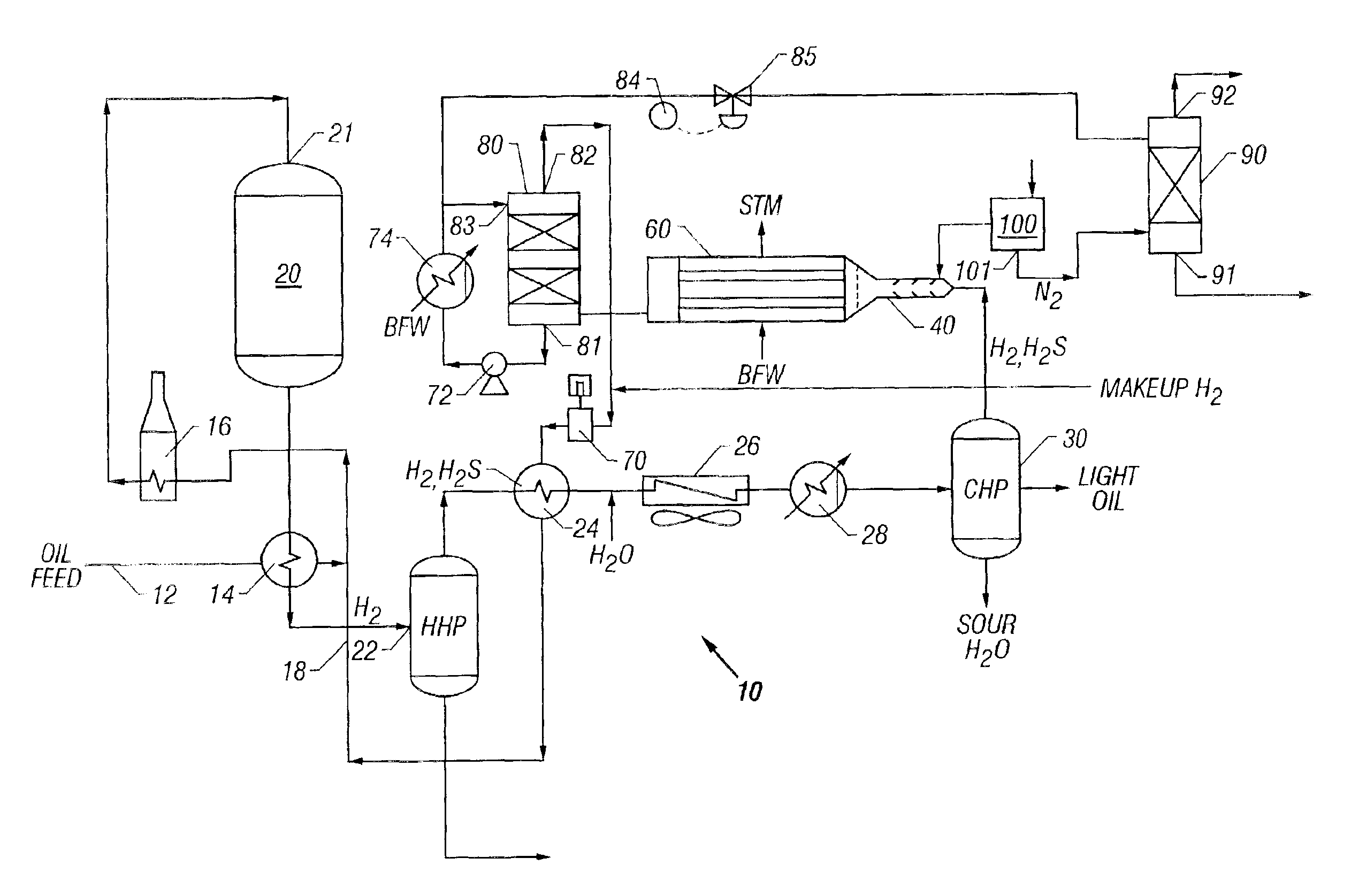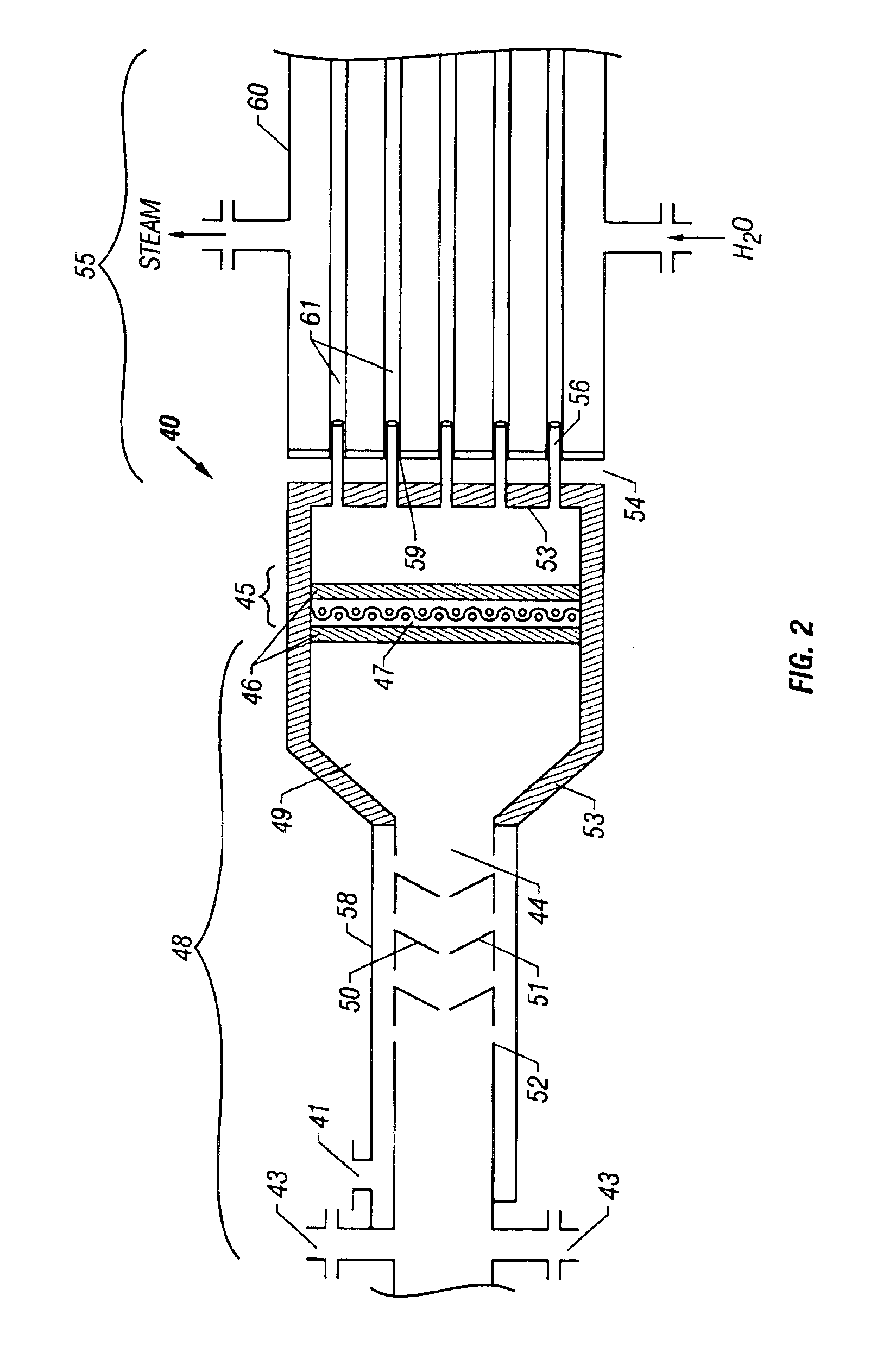Short contact time catalytic partial oxidation process for recovering sulfur from an H2S containing gas stream
a technology of catalytic partial oxidation and h2s, which is applied in the direction of sulfur preparation/purification, separation processes, physical/chemical process catalysts, etc., can solve the problems of hydrogen sulfide content, h/sub>2/sub> h2s, in concentrated form, etc., to achieve the effect of reducing the toxicity of hydrogen sulfide-containing gases and liquids, reducing the toxicity of reducing
- Summary
- Abstract
- Description
- Claims
- Application Information
AI Technical Summary
Benefits of technology
Problems solved by technology
Method used
Image
Examples
example 1
Petroleum Hydrotreater
[0056]A refinery hydrodesulfurization (HDS) plant is used to illustrate one embodiment of an improved sulfur removal system and process. The new process for H2S conversion can also be used with a feedstock consisting of practically any gas containing H2S, and the new sulfur removal unit may be placed in-line with many other compatible systems which require a H2S removal step. Referring to FIG. 1, a flow diagram of a preferred embodiment of a refinery hydrodesulfurizer (HDS) or hydrotreater system is shown. HDS system 10 generally includes oil feed inlet 12, feed / effluent heat exchanger 14, charge heater 16, hydrodesulfurization reactor 20, hot high pressure (HHP) separator 22, hydrogen heat recovery unit 24, air cooler 26, water cooler 28, cold high pressure (CHP) separator 30, short contact time reactor 40, waste heat boiler 60, recycle H2 compressor 70, sulfur condenser 80, sulfur degassing drum 90 and air separator 100. A basic HDS plant configuration, such ...
example 2
Purification of a Natural Gas Stream Containing H2S
[0071]Referring to FIG. 3, a diagram of a preferred embodiment of a natural gas desulfurizing system 100 is shown. System 100 generally includes a short contact time reactor 140 with a natural gas stream inlet 143, an O2 inlet 141, a heat exchanger such as waste heat boiler 160, and sulfur condenser 180. Reactor 140 is like reactor 40 described in Example 1 and shown in FIG. 2. Following waste heat boiler 160 is sulfur condenser 180, which has a liquid sulfur outlet 181 and a desulfurized gas outlet 182.
[0072]In operation, a natural gas stream that contains a quantity of H2S and an O2-containing stream are injected into inlets 143, 141, respectively. Apparatus that is well known in the art for injecting gas into short contact time reactors at high flow rates is employed to feed the reactant gases at atmospheric or superatmospheric pressure. Oxygen entering reactor 140 via inlet 141 is mixed with the H2S / natural gas stream in mixing ...
PUM
| Property | Measurement | Unit |
|---|---|---|
| Temperature | aaaaa | aaaaa |
| Temperature | aaaaa | aaaaa |
| Temperature | aaaaa | aaaaa |
Abstract
Description
Claims
Application Information
 Login to View More
Login to View More - R&D
- Intellectual Property
- Life Sciences
- Materials
- Tech Scout
- Unparalleled Data Quality
- Higher Quality Content
- 60% Fewer Hallucinations
Browse by: Latest US Patents, China's latest patents, Technical Efficacy Thesaurus, Application Domain, Technology Topic, Popular Technical Reports.
© 2025 PatSnap. All rights reserved.Legal|Privacy policy|Modern Slavery Act Transparency Statement|Sitemap|About US| Contact US: help@patsnap.com



